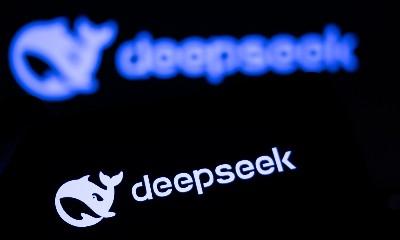
DeepSeek demonstrates strengthen of China’s homegrown innovation
Global Times
DeepSeek has emerged as a captivating topic of discussion in the global AI community. This small team of fewer than 140 people has achieved what even some tech giants struggle to accomplish.
Nearly all the engineers and researchers powering this company’s success were educated at China’s universities, and the average age of the R&D team members is about 28. This challenges long-held assumptions about talent distribution in the tech industry and signals a profound shift in the global innovation landscape.
DeepSeek’s engineers primarily come from prestigious Chinese universities, such as Tsinghua University, Peking University, Sun Yat-sen University, and Beijing University of Posts and Telecommunications.
This paints a powerful picture: cutting-edge innovation no longer relies on expatriate expertise or foreign-educated professionals.
For decades, global innovation narratives have centered on the US, particularly Silicon Valley. The Silicon Valley’s success stems from attracting top minds across the globe, a convergence of talent nurtured by Ivy League institutions and supported by a robust start-up ecosystem.
The implicit assumption has often been that this model could not be replicated elsewhere, especially in countries like China, where education and innovation systems were once dismissed as rigid and overly focused on rote learning.
DeepSeek turns that assumption on its head. Its success proves that China’s universities and research infrastructure have evolved to the point where they are producing first-class scientists and innovators. Rote learning has ceded ground to critical thinking, problem-solving, and cutting-edge experimentation. The team’s achievements suggest that China’s education reforms, particularly in STEM fields, are starting to bear fruit globally.

This transformation is no accident. Over the past two decades, China has made dramatic funding in higher education, ramping up funding for research and fostering international collaborations.
Universities like Tsinghua University and Peking University now rival MIT and Stanford in specific research fields, earning places on global rankings. More importantly, they nurture graduates who can compete with the best minds anywhere. DeepSeek is one of this reform era’s most striking success stories but will not be the last.
For years, the US has relied on attracting international researchers, particularly from China, as a cornerstone of its tech dominance. But the tables are beginning to turn.
As opportunities improve and ambitious projects like DeepSeek thrive in China, fewer Chinese scientists are leaping abroad. Many are choosing to stay, building cutting-edge companies at home and fueling innovation ecosystems in Beijing, Shenzhen and other rising tech hubs.
While China’s innovation engine is rapidly gathering momentum, it would be premature to conclude it has overtaken the US’ Silicon Valley, which still leads in its sheer concentration of capital and infrastructure and has a profoundly ingrained risk-taking culture. But the gap is unquestionably narrowing. With consistent investment in education and technology, China is emerging as a true contender in the global innovation race.
This shift has important implications for the world. For one, it challenges the notion that talent, and innovation, must be concentrated in a few key regions such as Silicon Valley.
DeepSeek exemplifies the growing decentralization of innovation. Talent is everywhere, and as countries like China continue to invest in their local ecosystems, global innovation is becoming more evenly distributed. More competition means more breakthroughs and diversity of ideas, as well as faster technological advancement for humanity.
DeepSeek is far more than a story about one company’s achievements. It symbolizes China’s rise as an incubator of world-class talent and innovation.
